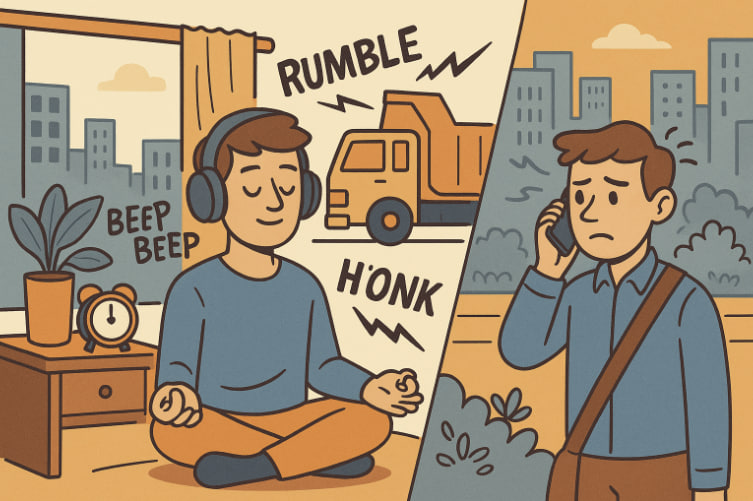Living in a bustling metropolis brings convenience, opportunity, and culture — but it also comes with chronic noise, crowds, and constant stress. As urbanization continues to rise, more people are exposed to environmental conditions that can seriously affect both mental and physical health. This article explores the challenges of city living and provides science-backed strategies for maintaining well-being in noisy, high-pressure environments.
The Hidden Health Cost of Urban Life
Cities are often associated with fast-paced lifestyles, overwork, and overstimulation. Key urban stressors include:
- Traffic and construction noise
- Air and light pollution
- Crowded public spaces and lack of personal space
- Time pressure and competitive work culture
- Limited access to nature
Prolonged exposure to these stressors can lead to burnout, anxiety, insomnia, and even increased risk of cardiovascular disease and immune suppression.
Noise Pollution: More Than Just Annoying
The World Health Organization recognizes environmental noise as a major public health issue. Chronic exposure to city noise (e.g., traffic, sirens, nightlife) is linked to:
- Elevated cortisol and adrenaline levels
- Disrupted sleep cycles
- Increased risk of heart disease and stroke
- Impaired concentration and memory
Even noise that doesn’t wake you can harm your nervous system over time.
Urban Stress and Mental Health
The urban environment stimulates the amygdala — the brain’s stress-processing center — more intensely than rural settings. Studies show that city dwellers are at higher risk for:
- Mood disorders
- Generalized anxiety
- Substance abuse
- Depression
Crowded transportation, pressure to perform, and lack of downtime all contribute to the psychological burden.
Strategies for Staying Healthy in the City
1. Create a Personal Quiet Zone
- Use noise-canceling headphones or white noise machines.
- Invest in soundproofing windows or thick curtains.
- Establish screen-free, silent hours at home.
2. Practice Mindful Time Management
- Avoid overbooking yourself with obligations.
- Schedule downtime and short breaks throughout the day.
- Use time-blocking or digital calendars to reduce chaos.
3. Spend Time in Nature
- Even 20 minutes in a green space can lower stress hormones.
- Urban parks, rooftop gardens, and riverside paths can restore mental clarity.
4. Build an Inner Routine
- Practice meditation, breathing exercises, or gentle yoga.
- Maintain consistent sleep-wake times to regulate your circadian rhythm.
- Engage in creative hobbies to counter cognitive overload.
5. Protect Your Sleep
- Use sleep masks and blackout curtains.
- Limit caffeine and screen exposure before bed.
- Set a cool, quiet, and dark sleep environment.
6. Supportive Social Networks
- Prioritize quality relationships, not quantity.
- Talk about your challenges with friends or a counselor.
- Join communities (offline or online) that share your interests.
Conclusion
Surviving and thriving in a megacity is possible — but it requires active self-care and environmental awareness. By managing exposure to noise, prioritizing recovery, and building mental resilience, city dwellers can protect their health amid the hustle. Urban life doesn’t have to mean burnout; with the right strategies, it can be vibrant and sustainable.
Glossary
- Noise pollution – excessive or harmful sound from urban sources.
- Amygdala – a brain region involved in stress and emotional processing.
- Cortisol – a stress hormone that affects metabolism, sleep, and mood.
- Circadian rhythm – the natural cycle that regulates sleep and alertness.
- White noise – consistent sound that masks other distracting noises.


